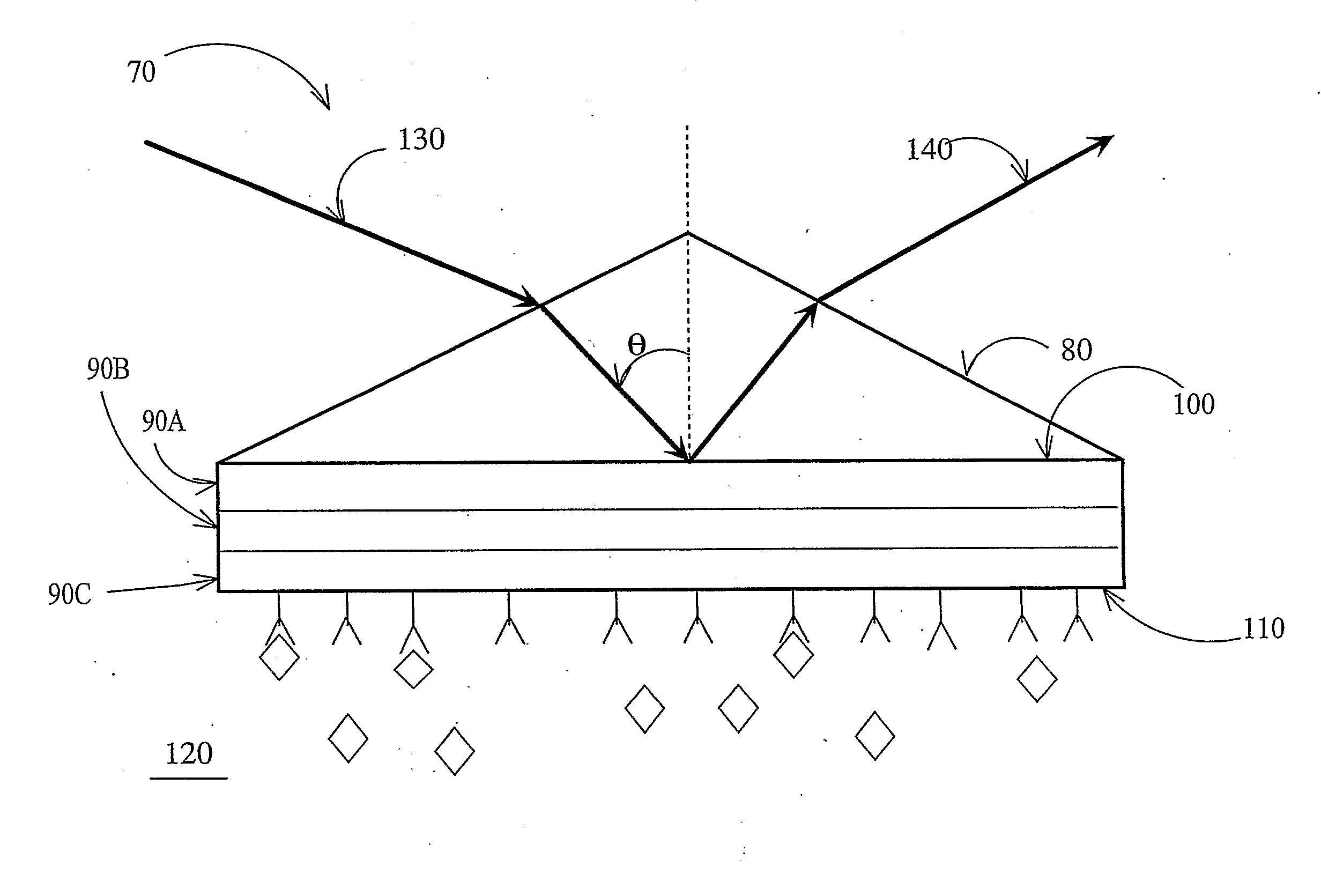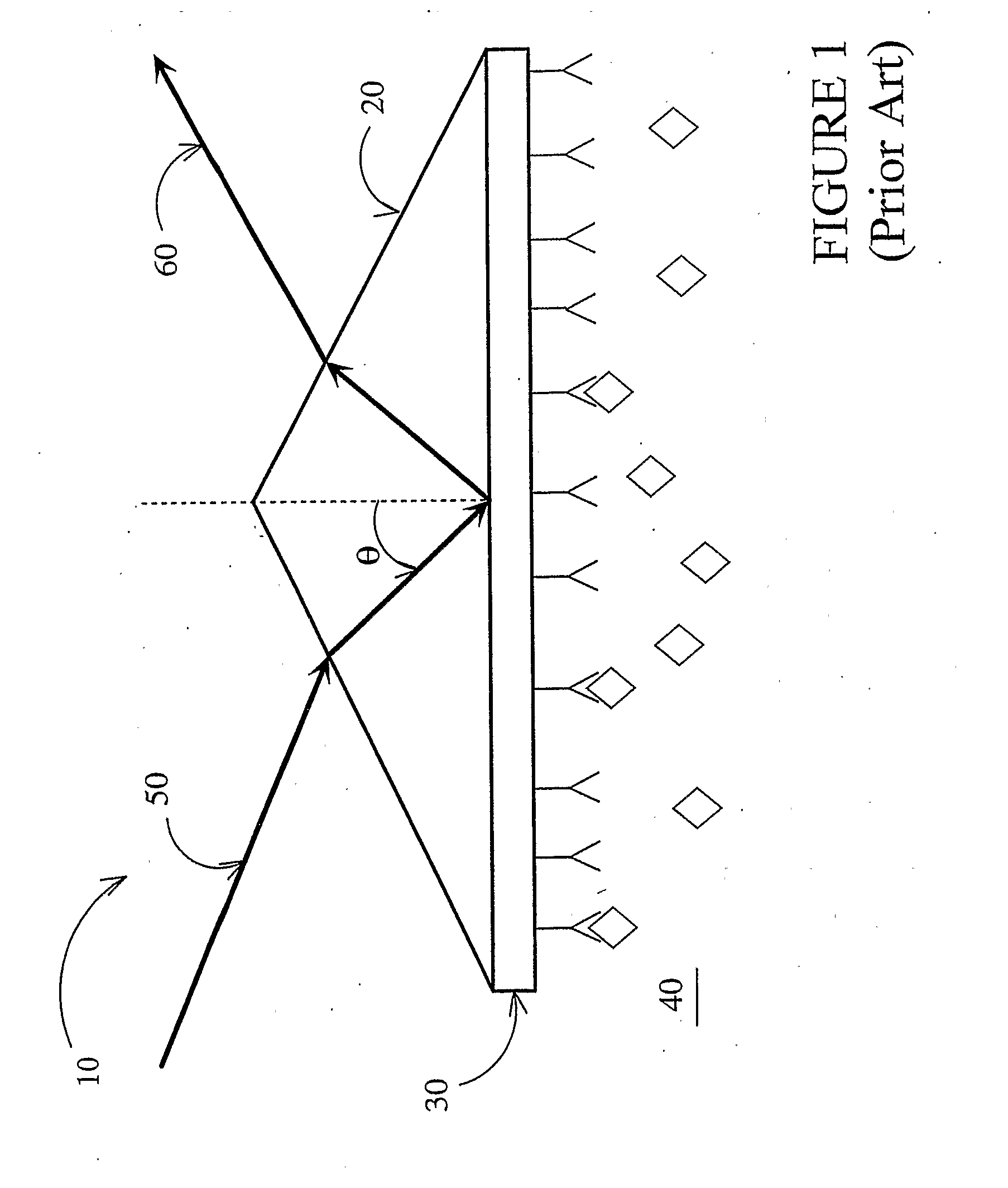Prism coupled silicon on insulator sensor
a technology of coupled silicon and insulator, which is applied in the direction of phase-affecting property measurement, measurement devices, instruments, etc., can solve the problems of limiting the ultimate sensitivity of spr technique, and inadvisable to work at longer wavelengths
- Summary
- Abstract
- Description
- Claims
- Application Information
AI Technical Summary
Problems solved by technology
Method used
Image
Examples
Embodiment Construction
[0035]Referring to FIG. 1, an SPR sensor according to the prior art is illustrated. In the sensor 10, a prism 20 is optically coupled to a gold film 30. Material 40 to be examined (an analyte plus water in one instance) is exposed to the gold film 30. An incident light 50 enters the prism 20 at an incident angle θ and is reflected out of the prism 20 as reflected light 60. As the incident angle θ changes, at some point the incident light couples to the SPR mode in the gold film 30. When this occurs, the intensity of the reflected light 60 significantly drops off. The angle at which this occurs changes as the refractive index of the material 40 immediately adjacent to the metal surface changes. This change in the refractive index of the material 40 is in proportion to the amount of analyte bound to the gold film 30—as the refractive index changes, the incident angle at which coupling occurs changes as well.
[0036]As can be seen from FIG. 2, the decrease in intensity of the reflected l...
PUM
| Property | Measurement | Unit |
|---|---|---|
| thickness | aaaaa | aaaaa |
| thickness | aaaaa | aaaaa |
| thickness | aaaaa | aaaaa |
Abstract
Description
Claims
Application Information
 Login to View More
Login to View More - R&D
- Intellectual Property
- Life Sciences
- Materials
- Tech Scout
- Unparalleled Data Quality
- Higher Quality Content
- 60% Fewer Hallucinations
Browse by: Latest US Patents, China's latest patents, Technical Efficacy Thesaurus, Application Domain, Technology Topic, Popular Technical Reports.
© 2025 PatSnap. All rights reserved.Legal|Privacy policy|Modern Slavery Act Transparency Statement|Sitemap|About US| Contact US: help@patsnap.com



